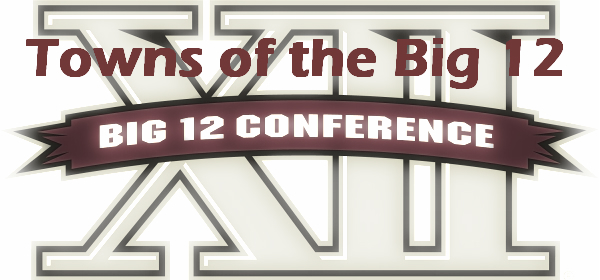Game Day Travel Guide: Big 12 Towns

As football season ends and basketball season approaches, many fans head out to games in unfamiliar towns to cheer on their team. This blog will give insight to the Big 12 mascots and a tradition you will encounter.
Iowa State University Cyclones, Ames
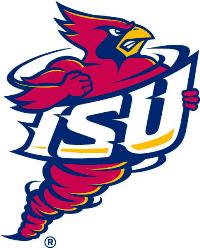 Mascot: The original mascot for Iowa State was the Cardinals. in 1895 there were numerous cyclones that tore through Iowa. The Chicago Tribune referred to Iowa State as the “Iowa Cyclones” and the name stuck. In 1954, they wanted to have a mascot and determined that a cyclone was too difficult to represent in costume. They decided to use a cardinal and name him “Cy”.
Mascot: The original mascot for Iowa State was the Cardinals. in 1895 there were numerous cyclones that tore through Iowa. The Chicago Tribune referred to Iowa State as the “Iowa Cyclones” and the name stuck. In 1954, they wanted to have a mascot and determined that a cyclone was too difficult to represent in costume. They decided to use a cardinal and name him “Cy”.
You don’t want to miss: Winterfest on December 2nd. Since 1988, the tradition begins with tree lighting. Other festivities include holiday music, campus carriage rides, visits to the Farm House, and much more.
University of Texas Longhorns, Austin
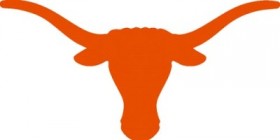 Mascot: Bevo the Longhorn was named by a post-game prank by their rivals: the A&M Aggies. The Aggies branded the Longhorn mascot with a “13-0” representing the previous year’s score. The Longhorns re-branded the Longhorn by moving the numbers around to spell “Bevo”. The name has stuck ever since.
Mascot: Bevo the Longhorn was named by a post-game prank by their rivals: the A&M Aggies. The Aggies branded the Longhorn mascot with a “13-0” representing the previous year’s score. The Longhorns re-branded the Longhorn by moving the numbers around to spell “Bevo”. The name has stuck ever since.
You don’t want to miss: The 26th Annual “Hex Rally” on November 21st. Each year before the post-Thanksgiving football game against the Aggies, thousands of Longhorn fans gather around the main building on campus to “hex” the Aggies.
Texas A&M Aggies, Bryan-College Station
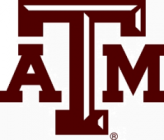 Mascot: The official mascot of the Aggies, Reveille is a full-bred Collie. In 1931, a small dog was hit by Cadets in a car. The Cadets hid her in the dorms for her to heal. When the morning bugler blew his horn, the dog woke barking, thus earning the name Reveille. The line of chosen dogs who have died since are buried at Kyle Field’s north entrance facing the scoreboard to watch as the Aggies outscore opponents.
Mascot: The official mascot of the Aggies, Reveille is a full-bred Collie. In 1931, a small dog was hit by Cadets in a car. The Cadets hid her in the dorms for her to heal. When the morning bugler blew his horn, the dog woke barking, thus earning the name Reveille. The line of chosen dogs who have died since are buried at Kyle Field’s north entrance facing the scoreboard to watch as the Aggies outscore opponents.
You don’t want to miss: The Student Bonfire on November 22. With the first on-campus burn in 1909, the Aggies burn the bonfire for one or two nights prior to the football game against the University of Texas. In 1999, tragedy struck when 12 students were killed and 27 were injured when constructing the bonfire. In 2002, the students started the tradition again as a non-university sanctioned bonfire. Annually anywhere from 8,000 to 15,000 fans attend the event.
Missouri University Tigers, Columbia
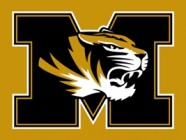 Mascot: In the 1890s, the Tiger was chosen for MU’s official mascot based on the nickname of a group of Columbians that defended the University from possible attacks by roving guerrilla groups during the Civil War. The mascot was named “Truman” for Harry S. Truman when the Tigers won the National Mascot of the Year in 2004.
Mascot: In the 1890s, the Tiger was chosen for MU’s official mascot based on the nickname of a group of Columbians that defended the University from possible attacks by roving guerrilla groups during the Civil War. The mascot was named “Truman” for Harry S. Truman when the Tigers won the National Mascot of the Year in 2004.
You don’t want to miss: The Every True Song/Daughter Fight Song. This song can be heard at each Missouri game.
University of Kansas Jayhawks, Lawrence
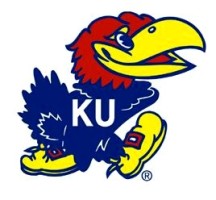 Mascot: In 1886, the Jayhawk became the official mascot of KU based on the Kansas regiment in the Civil War named the “Independent Mounted Jayhawks” that fought to keep Kansas a free state. In 1912 it first appeared in a visual form by a cartoonist. “Jay” has had several makeovers since 1912, and “Baby Jay”: was actually “hatched” out of a giant egg during a 1971 half-time show.
Mascot: In 1886, the Jayhawk became the official mascot of KU based on the Kansas regiment in the Civil War named the “Independent Mounted Jayhawks” that fought to keep Kansas a free state. In 1912 it first appeared in a visual form by a cartoonist. “Jay” has had several makeovers since 1912, and “Baby Jay”: was actually “hatched” out of a giant egg during a 1971 half-time show.
You don’t want to miss: The Rock Chalk Chant. E.H.S. Bailey, a chemistry professor, created the chant in the early 1900s. It started as “Rah, rah, Jayhawk, KU” and evolved into “Rock, Chalk, Jayhawk, KU”. Athletes in the 1920 Olympics and troops in WWII would chant these words. Teddy Roosevelt proclaimed that it’s the best college chant he had ever heard.
Tech Red Raiders, Lubbock
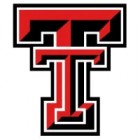 Mascot: The Masked Rider became the official mascot in 1954 at the Gator Bowl when the Masked Rider led the Raiders on the field. The Masked Rider is selected by a competition involving horsemanship and interviews with the Masked Rider Committee.
Mascot: The Masked Rider became the official mascot in 1954 at the Gator Bowl when the Masked Rider led the Raiders on the field. The Masked Rider is selected by a competition involving horsemanship and interviews with the Masked Rider Committee.
You don’t want to miss: The Carol of Lights on December 3rd. This tradition began in 1959 to cover the quadrangle and the administration building with lights. Today, the even is kicked off with a choir singing classic Christmas songs at the Science quadrangle. Today, students and Tech fans gather to watch over 25,000 red, white, and orange lights appear covering 13 buildings.
Kansas State University Wildcats, Manhattan
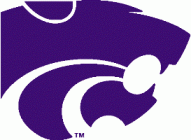 Mascot: KSU has been known as the Wildcats, Aggies, and Farmers. They officially became the Wildcats in 1915, when Coach Chief Bender called his team the “wildcats” because of their fighting spirit. They have been the Wildcats ever since.
Mascot: KSU has been known as the Wildcats, Aggies, and Farmers. They officially became the Wildcats in 1915, when Coach Chief Bender called his team the “wildcats” because of their fighting spirit. They have been the Wildcats ever since.
You don’t want to miss: The Wabash Cannonball Fight Song. In 1969, the department of music burned down and the only thing that was salvaged was the score for the Wabash Cannonball. A song with no meaning for KSU became their fight song. The crowd rocks back and forth whenever the Wabash Cannonball is played.
Oklahoma University Sooners, Norman
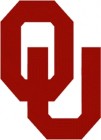 Mascot: The Sooner Schooner is a Conestoga wagon that’s pulled by matching ponies, Boomer and Sooner. After each touchdown, Boomer and Sooner pull the Conestoga wagon around the field. The nickname Sooner comes from the campers that were on the Oklahoma State line prior to the territory opening. In 1889, the territory opened and the campers got their first pick because they arrived there “sooner” than the rest. Boomer comes from those who waited for the territory to open before they headed towards the Oklahoma Territory.
Mascot: The Sooner Schooner is a Conestoga wagon that’s pulled by matching ponies, Boomer and Sooner. After each touchdown, Boomer and Sooner pull the Conestoga wagon around the field. The nickname Sooner comes from the campers that were on the Oklahoma State line prior to the territory opening. In 1889, the territory opened and the campers got their first pick because they arrived there “sooner” than the rest. Boomer comes from those who waited for the territory to open before they headed towards the Oklahoma Territory.
You don’t want to miss: The Boomer-Sooner Chant. Half the stadium chants “boomer” while the other side chants “sooner”.
Oklahoma State University Cowboys, Stillwater
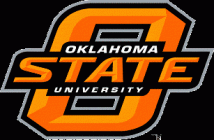 Mascot: Since 1890 the OSU teams were called the Agriculturists, Aggies, Farmers, and even the Tigers up until 1929 when a sports editor started calling them the Cowboys, which has stuck ever since. Bullet, the horse was created in 1984 and lives in the OSU Equine Center and is cared for by the Spirit Rider team.
Mascot: Since 1890 the OSU teams were called the Agriculturists, Aggies, Farmers, and even the Tigers up until 1929 when a sports editor started calling them the Cowboys, which has stuck ever since. Bullet, the horse was created in 1984 and lives in the OSU Equine Center and is cared for by the Spirit Rider team.
You don’t want to miss: The Spirit Walk. Two hours before each football game, the players, marching band, and spirit squad walk down Hester Street to Boone Pickens Stadium. Fans cheer on the players, and afterward the walk the marching band performs on the student union lawn.
Baylor Bears, Waco
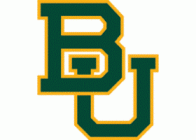 Mascot: Baylor has an actual living mascot – the bear, which is “regulated” by the US Department of Agriculture and Texas Parks and Wildlife. In 1914 a vote was held to determine what the mascot should be. The 32nd Infantry Division during World War I gave a living Bear to Baylor in 1920, and they’ve had an actual bear as a mascot ever since.
Mascot: Baylor has an actual living mascot – the bear, which is “regulated” by the US Department of Agriculture and Texas Parks and Wildlife. In 1914 a vote was held to determine what the mascot should be. The 32nd Infantry Division during World War I gave a living Bear to Baylor in 1920, and they’ve had an actual bear as a mascot ever since.
You don’t want to miss: The Homecoming Parade on November 4-5. The homecoming parade began in 1909, but the tradition really took off after World War I. The homecoming parade has been an event to see since, and with over 200 floats, it is thought to be the oldest and largest collegiate homecoming parade in the nation.
Check the catalog for books to help guide you:
Game Day GuideBasketball in the Big 12 ConferenceFootball in the Big 12












